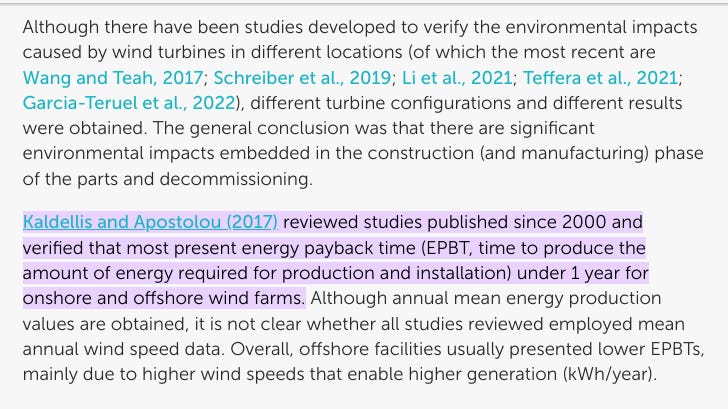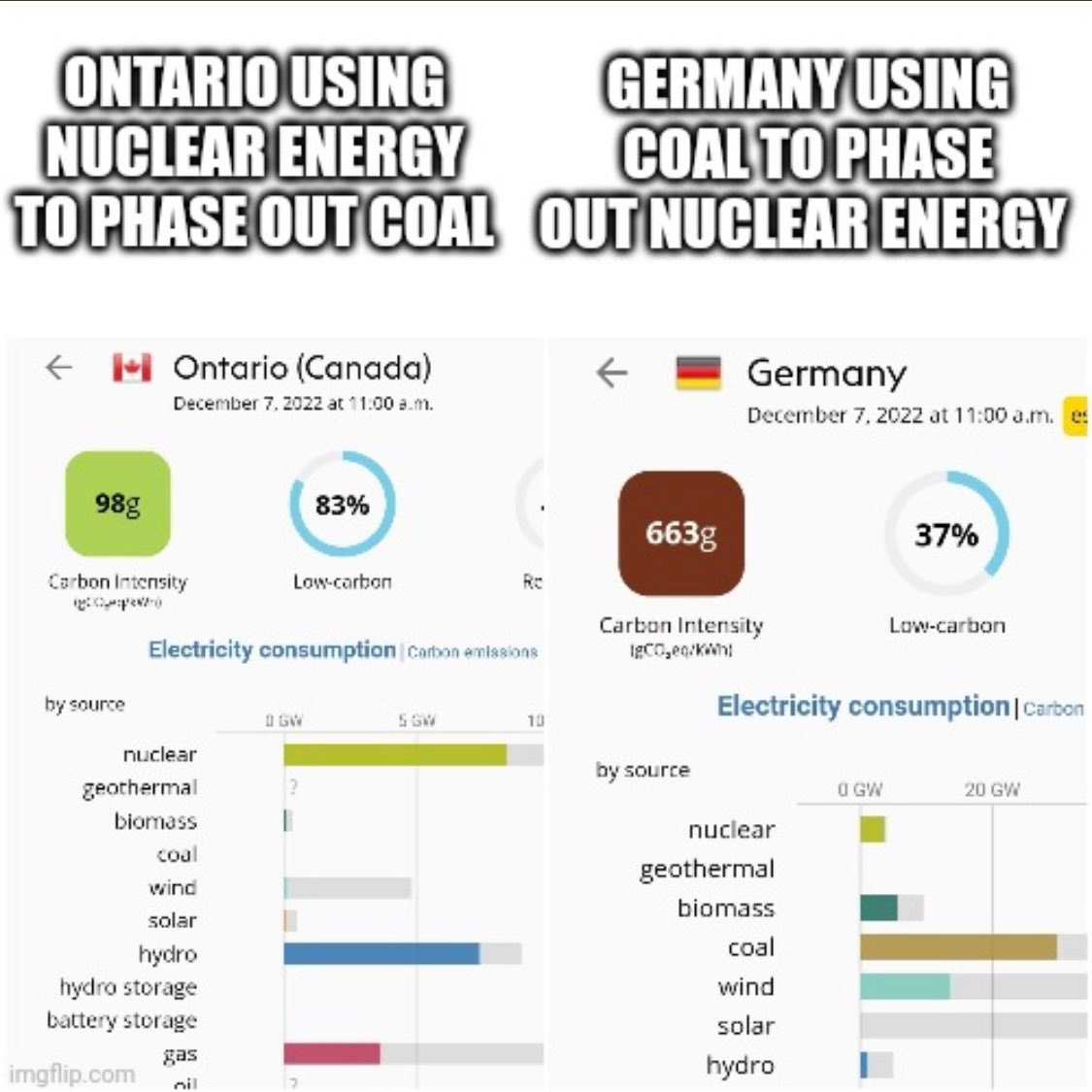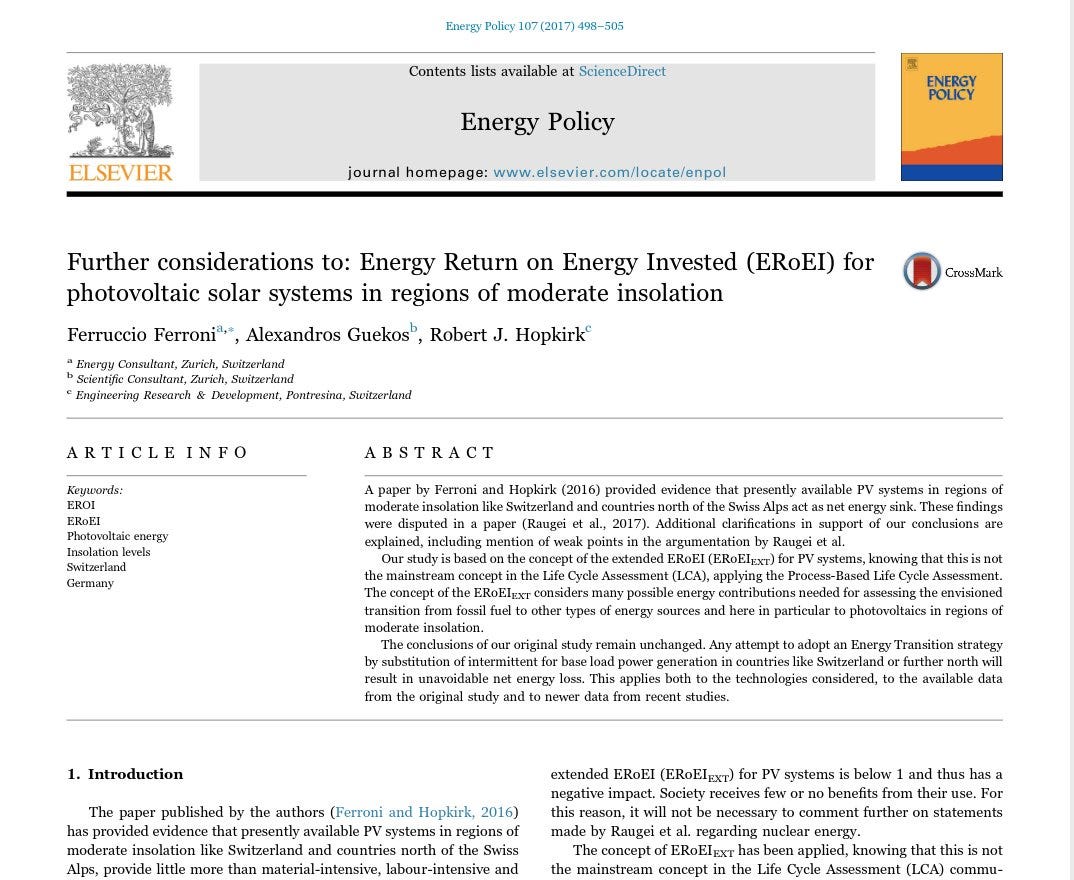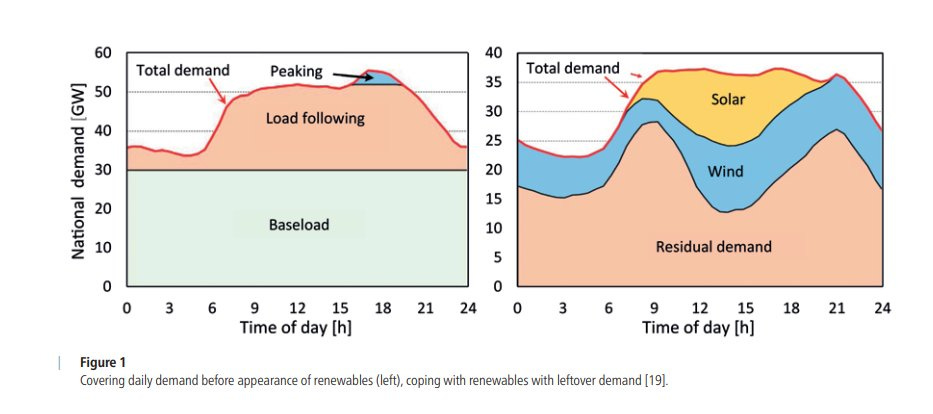The Greenhouse Gas Payback Time, or GHGPBT, just keeps getting better. Or so they say. At this rate, the climate will be changing very soon. The Excel Models have verified it. And almost everybody on the planet seems to believe it. But all models are based on specific analytical assumptions in the context of specific questions. In the case of Wind & Solar, the modeling assumptions are embarrassingly silly.
These verified Life Cycle Assessments allow unRenewable energy academics, supporters, and manufacturers to market their wares and, rather amusingly to me, blithely claim that wind and solar critics are doing nothing more than engaging in illegitimate “smear tactics.” All the “energy” wasted in creating the Wind and Solar Machines is “paid back” within a few months. Ergo, from the moment that day comes, the Wind - Solar Machine is “saving” gazillion tons of CO2. Change the Climate! Clean Green ESG Love. Myths debunked. Anti Wind & Solar smear tactics exposed in burning shame.
But assumptions are the name of the game whenever crafting technical analyses. If we take a look at the details behind the underlying assumptions of these arguments, which blithely overlook unfavorable facts, the analysis only works if you believe in fairy tales and alchemy. The underlying assumptions for the mental construct just make no sense. I highlight three specific reasons.
1. The comparison baseline is always against some existing grid. This is absurd. In any resource evaluation, the comparison is against new new resources to be added in the future, not to the existing grid.
2. The construct absurdly inflates the relative value of the energy delivered by Wind and Solar. Wind - Solar grids are 100% dependent on fossil fuels. Gas & Nuclear are not fungible with Wind & Solar.
3. The construct does not even begin to account for all the energy and carbon consumed in the system required to support Wind and Solar grids.
These are naught but illegitimate mental constructs, assumptions, and games that have no basis in fact or the objective reality that plays out around us every day.
1. Carbon “Payback” Compared to What Baseline?
The honest comparison should be new resources that may be added to a grid, not the existing grid. The question presented from a system planning point of view is simply this: Which new generation resources should be built? Assuming GHG emissions is a valid point of analysis, then it’s a very simple question: What are the GHG emissions from the following new generation resources compared solely against each other, since these are the only new resources that we are planning to build in the future:
Wind
Solar
Natural gas
Nuclear power
Coal is is absolutely irrelevant when it comes to planning for new resources for two reasons.
First, no new coal plants are being built in the nations relying on life cycle assessments to assist in planning decisions.
Second, gas and nuclear power are the only resources that replace coal capabilities on a grid due to physics. Germany built hundreds of billions of wind and solar resources, resulting in total dependence on either (i) Russian Gas; or (ii) lignite coal.
Wind & Solar advocates love to compare their wares against coal—even though doing so is absolutely illegitimate—because doing so makes them look better. Look ho much coal we are replacing! But it’s just a mental trick—a con. New wind and solar are competing against only new gas and nuclear power. Because wind and solar are chaotic, these resources cannot and do not replace fossil fuels. Only nuclear power replaces fossil fuel capabilities—and that replacement is 100%. After wrecking its nuclear power fleet, Germany became totally dependent on Russian Gas. Then coal. There are only three choices: Coal. Gas. Nuclear.
Any honest life cycle assessment would present system planners two two very simple questions when it comes to future GHG impacts from new resources:
Honest Question No. 1:
Compared to a new, modern, dual combined cycle natural gas plant, what are the relative GHG emissions vs. Wind and Solar?
In other words, if we install a new natural gas plants, the GHG impacts are expected to be X while if we install new Wind and Solar, the GHG impacts are expected to be Y.
Honest Question No. 2:
Compared to a new nuclear power plant, what are the relative GHG emissions vs. Wind and Solar?
In other words, what is the relative energy and GHG “payback time” for, say, the BWRX-300 or AP-1000, and a competing Wind or Solar project? Hint: it’s a lot longer than 12 months. It’s never. Generations of Wind and Solar machines will need to be created before a nuclear power plant wears out. Each one will consume orders of magnitude more energy and precious fossil fuel resources (like steel and diesel fuel that we need for farming - who likes food?). There is no comparison here. We don’t even need a computer model. Yet the EU forces France to build Wind and Solar to replace its nuclear power grid. Go figure.
2. Bicycles and Locomotives Are Not Fungible
One of the most absurd assumptions in life cycle assessments is that every kilowatt hour of power produced by a windmill or a solar panel has the same value, and provides the same service, as a kilowatt hour produced by a dispatchable resource.
I have written extensively on the absurdity of comparing wind and solar with gas and nuclear power. These resources are not comparable. Electrical energy is an on-demand, real-time service, not a commodity. It can’t be stored. Chaotic service is not the same as on-demand service. Chaotic service is not a service. How valuable as a service is Random Uber vs. Uber?
Along these lines, lifecycle assessments rely entirely on absurd energy conversions to get to the payback result they want by converting all the energy units into electric energy units so that the Wind - Solar “product” can “repay” the energy that went into their creation. It works like Reverse Alchemy:
The Met Coal required to make steel for wind turbines and solar panels has X heat value.
X heat value is equivalent to Y kilowatt hours of electric energy (e.g., if you burned the met coal in a coal plant, you would get Y units of electrical energy.
A wind turbine sited in the most windy or sunny place we can think of produces Y units of electrical energy in Z months (and assuming that Y units of electrical energy have the same grid value as all others).
Ergo, the solar panel or wind turbine has “paid back” the Met Coal consumed in creating the machines in Z months. From that point forward, the machine is producing all the met coal we will ever need. Now we just need trillions and trillions more magic energy machines.
This mental construct is absurd. The electrical energy value of met coal is not relevant because one would never waste met coal to make electricity. It’s metallurgical grade carbon used for making steel and polysilicon. It is a highly limited and constrained energy resource that has high impacts and is in short supply. The argument is like comparing the calorie value of lard with the calorie value of bread. Which one has more value to you as a food? A unit of lard has the same calories as a unit of bread. Therefore, they are the same. The mental construct is like comparing diamonds and coal because they are both Carbon. It’s an absurd mental construct assumption, without which the life cycle assessment simply implodes on itself.
Another issue in this context is that while wind and solar production rates are highly dependent on siting decisions, gas and nuclear produce the same dispatchable, load-following and load-balancing functions no matter where they are sited. Life cycle assessments make highly generalized assumptions about siting of wind and solar resources that my or may not have any basis in reality—and usually not. But nobody calls this out.
For instance, the Travers Solar project, some 1.3 million Chinese solar panels sited near Calgary at 52 degrees latitude, is the biggest energy con that Canada has ever seen. Solar projects sited in northern latitudes are naught but Carbon & Mineral Sinks.
Another issue is that while gas and nuclear produce steam that spins a synchronous rotating mass that inherently provides grid support and stability, wind and solar variability provides no such stability. In fact, wind and solar destabilize the grid.
The kinetic energy of these massive rotating machines works like a shock absorber to keep grid frequency from dropping too fast when demand exceeds supply or rising too fast when supply exceeds demand. Without this stabilizing force, power grids could face a greater risk of frequency excursions that could force generators offline or cause cascading outages like the 2003 blackout that affected about 50 million people across the Northeast U.S. and Canada’s Ontario province.
Jeff St. John - Solving the Renewable Energy Grid’s Inertia Problem
Hint: It’s not easily solveable and doing so requires significant additional grid resources, as increasing amounts of wind and solar are added to the grid.
3. External Carbon and Energy Costs Are Enormous
Life cycle assessments do not even begin to account for all of the external energy and carbon costs and resources that would not be required or incurred, but for the need to deal with the chaotic energy produced by wind and solar. I have written extensively on this topic as well. Wind and Solar grids are 100% dependent on natural gas power, so the net GHG savings are illusory due to factors such as spinning standby power, reserve power, and, most important, ramping costs and damage. The grid has become totally chaotic.
And that chaos means one thing—the need for ramping power. The Weather Pit keeps getting deeper. Fast acceleration and deceleration is just as wasteful and damaging to power generators as it is for your car. Imagine going from 0 to 100 miles per hour and back a few hundred times a day vs. cruising at freeway speed. Fuel. Wear and tear. Are you saving energy and carbon? Power plants are the same. Wind and solar chaos are wrecking them. Yet the life cycle assessments ignore it.
Read more here:
And here:
And here:
Chaos in the natural gas supply chain.


How many life cycle assessments account for all the resources wasted building excess transmission infrastructure that is not needed for nuclear power? None of them.
More wind and solar is not better.
The Only Question That Matters
When it comes to energy, there is only one question: How can humans obtain the largest amounts of useful (controllable) energy (thermal is by far the most useful energy form), using the lowest total natural resource inputs? Nuclear power produces orders of magnitude more useful energy, for the longest periods of time, using orders of magnitude fewer total natural resource inputs and system costs, than any engine ever devised by humans. The only energy policy that matters to humanity is planning and building nuclear power. Plan and build hundreds and hundreds of new nuclear power plants as quickly as possible. Wind and Solar are naught but shiny keys.
Right now, we are being gaslit by Gazprom and such.








Incidentally, the Russians are the world's largest producer of nuclear energy, and are an export powerhouse when it comes to plants. They have an essentially unlimited amount of gas/oil/coal - and yet are growing their share of nuclear power, just like the Chinese.
Love your writing BF Randall, keep it up.
Do you know if there are any further studies done on the "Full Cost of Electricity" compared to LCOE? I remember seeing a post of yours mentioning it and I read the Texas study about it, but they only described what FCOE would include but there wasn't an actual estimate of FCOE vs LCOE. Some sound numbers of FCOE vs LCOE would be very telling on how expensive renewables are compared to nuclear in the grand scheme.